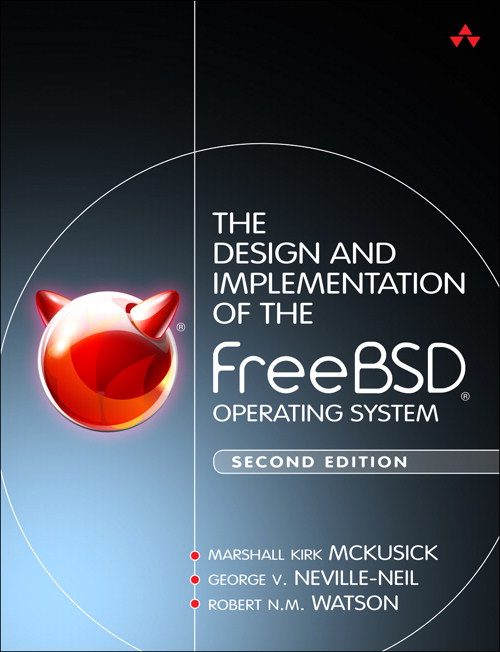
Now available: The Design and Implementation of the FreeBSD Operating System (Second Edition)
[ source navigation ] [ diff markup ] [ identifier search ] [ freetext search ] [ file search ] [ list types ] [ track identifier ]
FreeBSD/Linux Kernel Cross Reference
sys/ufs/ufs/README.acls
Version:
- FREEBSD - FREEBSD-13-STABLE - FREEBSD-13-0 - FREEBSD-12-STABLE - FREEBSD-12-0 - FREEBSD-11-STABLE - FREEBSD-11-0 - FREEBSD-10-STABLE - FREEBSD-10-0 - FREEBSD-9-STABLE - FREEBSD-9-0 - FREEBSD-8-STABLE - FREEBSD-8-0 - FREEBSD-7-STABLE - FREEBSD-7-0 - FREEBSD-6-STABLE - FREEBSD-6-0 - FREEBSD-5-STABLE - FREEBSD-5-0 - FREEBSD-4-STABLE - FREEBSD-3-STABLE - FREEBSD22 - l41 - OPENBSD - linux-2.6 - MK84 - PLAN9 - xnu-8792
SearchContext: - none - 3 - 10
SearchContext: - none - 3 - 10
1 $FreeBSD$ 2 3 UFS Access Control Lists Copyright 4 5 The UFS Access Control Lists implementation is copyright Robert Watson, 6 and is made available under a Berkeley-style license. 7 8 About UFS Access Control Lists (ACLs) 9 10 Access control lists allow the association of fine-grained discretionary 11 access control information with files and directories, extending the 12 base UNIX permission model in a (mostly) compatible way. This 13 implementation largely follows the POSIX.1e model, and relies on the 14 availability of extended attributes to store extended components of 15 the ACL, while maintaining the base permission information in the inode. 16 17 Using UFS Access Control Lists (ACLs) 18 19 Support for UFS access control lists may be enabled by adding: 20 21 options UFS_ACL 22 23 to your kernel configuration. As ACLs rely on the availability of extended 24 attributes, your file systems must have support for extended attributes. 25 For UFS2, this is supported natively, so no further configuration is 26 necessary. For UFS1, you must also enable the optional extended attributes 27 support documented in README.extattr. A summary of the instructions 28 and ACL-specific information follows. 29 30 To enable support for ACLs on a file system, the 'acls' mount flag 31 must be set for the file system. This may be set using the tunefs 32 '-a' flag: 33 34 tunefs -a enable /dev/md0a 35 36 Or by using the mount-time flag: 37 38 mount -o acls /dev/md0a /mnt 39 40 The flag may also be set in /etc/fstab. Note that mounting a file 41 system previously configured for ACLs without ACL-support will result 42 in incorrect application of discretionary protections. Likewise, 43 mounting an ACL-enabled file system without kernel support for ACLs 44 will result in incorrect application of discretionary protections. If 45 the kernel is not configured for ACL support, a warning will be 46 printed by the kernel at mount-time. For reliability purposes, it 47 is recommended that the superblock flag be used instead of the 48 mount-time flag, as this will avoid re-mount isses with the root file 49 system. For reliability and performance reasons, the use of ACLs on 50 UFS1 is discouraged; UFS2 extended attributes provide a more reliable 51 storage mechanism for ACLs. 52 53 Currently, support for ACLs on UFS1 requires the use of UFS1 EAs, which may 54 be enabled by adding: 55 56 options UFS_EXTATTR 57 58 to your kernel configuration file and rebuilding. Because of filesystem 59 mount atomicity requirements, it is also recommended that: 60 61 options UFS_EXTATTR_AUTOSTART 62 63 be added to the kernel so as to support the atomic enabling of the 64 required extended attributes with the filesystem mount operation. To 65 enable ACLs, two extended attributes must be available in the 66 EXTATTR_NAMESPACE_SYSTEM namespace: "posix1e.acl_access", which holds 67 the access ACL, and "posix1e.acl_default" which holds the default ACL 68 for directories. If you're using UFS1 Extended Attributes, the following 69 commands may be used to create the necessary EA backing files for 70 ACLs in the filesystem root of each filesystem. In these examples, 71 the root filesystem is used; see README.extattr for more details. 72 73 mkdir -p /.attribute/system 74 cd /.attribute/system 75 extattrctl initattr -p / 388 posix1e.acl_access 76 extattrctl initattr -p / 388 posix1e.acl_default 77 78 On the next mount of the root filesystem, the attributes will be 79 automatically started, and ACLs will be enabled.
Cache object: 560a06a2293b62441c5f9ffe5a1851fc
[ source navigation ] [ diff markup ] [ identifier search ] [ freetext search ] [ file search ] [ list types ] [ track identifier ]